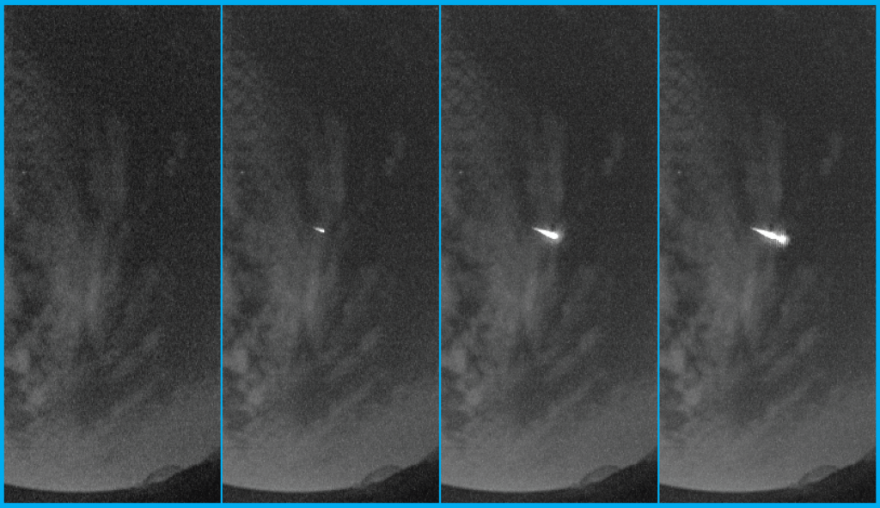Look to the skies after the moon sets next week to see the Lyrid meteror shower.
Click on the audio for Victoria Wilson Winne's April Stargazers Report.
On the evening of April 19th, we can begin to watch for the Lyrid meteor shower. This shower has the distinction of being one of the oldest recorded meteor showers with observational records dating back to the year 687 BC, when the Chinese observed the Lyrid meteors “falling like rain in the night sky”.
When comets orbit the sun, they leave a dusty trail behind them. As the earth passes through these debris trails, tiny particles around the size of a grain of sand collide with our upper atmosphere at over 100,000 miles an hour, vaporizing into the fiery streaks we call shooting stars.
The Lyrids are known to have unpredictable outbursts, with breathtaking numbers of glowing trails in the sky, some lingering for several seconds. On rare occasions, over 100 an hour have been seen.
As the moon will be up, the best time to watch for the meteors may start between after moonset and dawn on April 19th, up in the north east sky, probably peaking in the predawn hours on April 22nd.
This month’s full moon occurs on the 26th, and is what is popularly termed a supermoon. The moon’s orbit is elliptical, so sometimes it is closer, and sometimes further away from the earth, and a supermoon is when it is closest to the earth in its orbit. This is technically termed the lunar perigee.
Both the sun and the moon’s gravitational influences on the earth give us our tide cycles. When the moon is in line with the sun, at new and full moon, the two celestial bodies combine to exert a maximum gravitational pull on the world’s oceans. This is when we have tides with the biggest difference between high and low water, called spring tides.
Whilst we always expect two sets of these spring tides a month here in Kachemak Bay and Cook Inlet, because this April moon will be closer than usual, it will exert a stronger gravitational pull, giving us even higher highs and lower lows, known as perigean spring tides.
And indeed, we will have our largest tidal range of the year on Wednesday April 28th, with an impressive range of 27’ 10’’.
So, if you’ve been lucky enough to see some shooting stars, the 28th will present you with the second lowest tide of the year to tidepool for some sea stars.
And you don’t even need to get up in the middle of the night, as this minus 5.7 tide occurs at a very respectable 10 in the morning.
This is Victoria Wilson Winne, with your April Stargazer’s Report.




